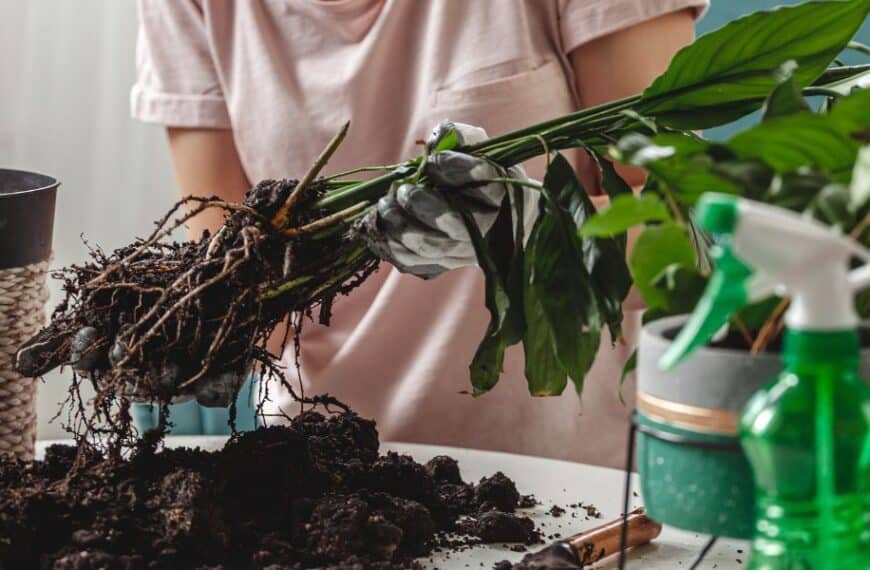Content
Houseplants are a wonderful addition to any home, providing a touch of nature and a splash of color.
However, they can also be a source of frustration when they start showing signs of distress.
One common problem that many indoor gardeners face is root rot, a condition that can quickly turn a thriving plant into a wilting mess.
This article will guide you through the process of identifying, treating, and preventing root rot in your houseplants.
Understanding root rot: the silent killer
Root rot is a disease that affects the roots of plants, causing them to decay.
It’s often caused by overwatering or poor drainage, which creates an environment where fungi can thrive.
These fungi attack the roots, causing them to become soft and mushy. As the disease progresses, it can cause leaves to yellow, wilt, or drop off.
If left untreated, root rot can kill your plant.
Identifying root rot in your houseplants
The first step in treating root rot is to identify it. This can be tricky because the roots are usually hidden beneath the soil.
However, there are some telltale signs that your plant may be suffering from this disease.
Yellowing or wilting leaves
If your plant’s leaves are turning yellow or wilting despite regular watering, this could be a sign of root rot.
This happens because the diseased roots are unable to absorb water and nutrients effectively.
Stunted growth
A plant with root rot may stop growing or grow very slowly. This is because the disease is damaging its root system, which it relies on for growth.
Foul smell
Root rot can cause the soil around your plant to develop a foul smell. This is due to the decay of the roots.
Treating root rot
If you suspect that your plant has root rot, it’s important to act quickly. Here are some steps you can take.
Remove the plant from its pot
Carefully remove the plant from its pot and examine the roots. If they’re brown or black and mushy instead of white and firm, your plant likely has root rot.
Trim away diseased roots
Using a clean pair of scissors or pruning shears, trim away the diseased roots.
Be sure to sterilize your tools before and after to prevent spreading the disease to other plants.
Repot the plant
After trimming away the diseased roots, repot the plant in fresh, well-draining soil. Avoid overwatering your plant in the future to prevent root rot from reoccurring.
Preventing root rot
Prevention is always better than cure. Here are some tips to help prevent root rot in your houseplants.
Water wisely
Overwatering is a common cause of root rot. Make sure to water your plants only when the top inch of soil is dry.
Ensure good drainage
Choose pots with drainage holes and use well-draining soil to prevent water from sitting at the bottom of the pot.
Keep your tools clean
Always clean your tools before and after using them on your plants to prevent spreading diseases like root rot.
Root rot can be a serious problem for houseplants, but with proper care and attention, it’s entirely preventable.
By understanding what causes root rot and how to treat it, you can keep your indoor garden healthy and thriving.








